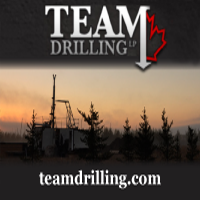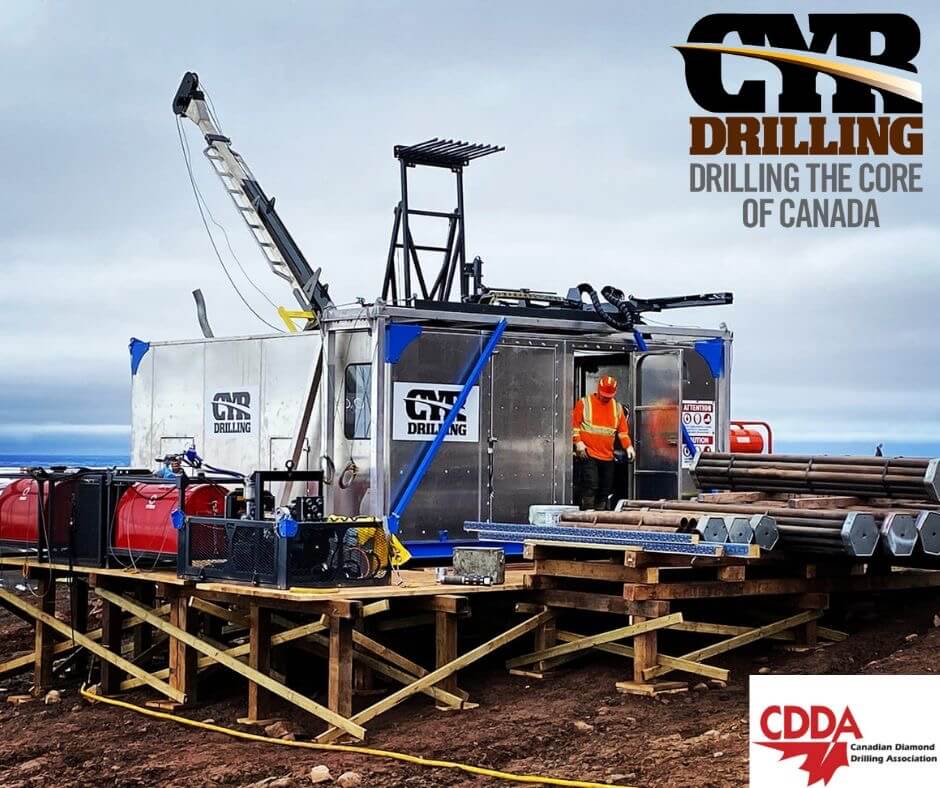Tom Welton, CRSP Director, Health and Safety Services and Education Program with support of the CDDA, workers, employers, and WSN planned and facilitated the Canadian Surface Diamond Drilling Sector Risk Assessment along with an associated Root Cause Analysis on the highest identified risk.
With this assessment, they were able to publish Surface Diamond Drilling Root Cause Analysis Controls for Top 10 Hazards. Please see the cause analysis listed below, full presentation is available on our website at www.cdda.ca/conventions.
1. Processes: Inadequate (internal/external) communication (pre-planning) with Emergency Services
- Written and regularly reviewed plan with all EMS contact numbers (e.g.: 911, site services, mutual aid support services)
- Subset of company emergency preparedness plan
- Posted in conspicuous locations
- Updated when changes to conditions occur
- Contact EMS upon formulation of plan (discuss conditions; route of travel; escort considerations; meeting points; seasonal concerns – e.g.: snow removal)
- Site-specific requirements of rescue service (i.e.: public or contract emergency air rescue service landing spots)
- Supplemental equipment required to access site (e.g. ARGO, ATV)
- Training/simulations (drills) that can include external emergency responders
- Signage on how to get to site
- Ensure additional supplies are readily available (e.g.: emergency rations, water) should shelter-in-place be required
2. Tools and machines: Limited availability and inadequate readiness of transportation/evacuation equipment (transportation/evacuation of injured worker)
- Proper selection and maintenance of equipment for site access conditions
- Ensure equipment accommodates evacuation of injured person(s) àg.: snowmobile requires sled; ATV requires basket/stretcher rack
- Conduct regular preventative maintenance
- Daily pre-op checks (as per checklist; includes manufacturer specifications, site requirements)
- Ensure appropriate location/storage of equipment
- Training to ensure competence of equipment operation
- Readily available supply of fuel on hand for equipment
- Transported and stored
- Ensure generators are available and functional (regular inspections)
- Designated fleet/maintenance management/personnel (clear individual roles/responsibilities)
3. Measures: Lack of/inadequate emergency response procedures
- Ensure all stakeholders are involved in the process/development of emergency response plan
- Internal: management, workers, JHSCs/HSRs
- External: HSAs, contractors
- Review appropriate standards (e.g.: CSA Z731-03: Emergency Preparedness and Response) in the development of emergency preparedness plans
- Conduct a robust risk assessment; utilize findings to develop plan/procedures
- Testing emergency response plan (training, drills)
- Establishing control group for critical/high level events
- Coordination, role clarification
4. Culture: Hesitation to initiate emergency response (for fear of reprisal; uncertainty as to when to do so)
- Management commitment to ensure adequate response
- Inculcating a culture of empowerment and encouragement to respond as an employee feels the need to do so
- Training in different scenario (drills) to gain confidence to react appropriately
- Ensure this is conducted during training and orientation/onboarding process
- If conducted in a self-pace format, reinforce during follow-up meetings
- Reviewing industrial/past incidents
- Conducting knowledge refreshers at appropriate times (e.g.: toolbox talks, via health and safety management/company digital systems)
- Ensure this is conducted during training and orientation/onboarding process
5. People: Lack of awareness of OR lack of preparation to address crises from pre-existing medical conditions
- Pre-employment medical screening and disclosures
- Ongoing regular (e.g.: annual) pre-deployment medical examinations for isolated situations
- Fitness testing (internal/external)
- Supervisor and worker training to address medical conditions (e.g.: EpiPen use for those at risk of anaphylaxis)
- Daily checklist/assessment by supervisors (fit for duty checklist)
- Physical health, fatigue, medication availability
- Additional assessments for mental health and wellness (when required)
- Consideration of re-assignment of workers as necessary/when reasonable
6. People: Mental and physical fitness (unfit for duty)
- Protocols for addressing substance use (e.g.: availability of Naloxone kits)
- Wellness program for employees (e.g.: EAP)
- Optional additional training and resources for employees (e.g.: financial planning; family management)
- Culture: encouragement of use of these resources (posting and communicating summary of services)
- Integrating sessions (scheduling) throughout the year
- Daily checklist/assessment by supervisors (fit for duty checklist)
- Training for supervisors on what unfit for duty looks like (signs and symptoms)
- Substance use, fatigue, mental injury/harm
- Accompanying policies and procedures to support
- Training for supervisors on what unfit for duty looks like (signs and symptoms)
- Work re-assignments to accommodate fitness level (e.g.: return to work)
- Regular employer reviews of fit-for-duty requirements
- When conducting risk assessments, ensuring mental health and fit for duty considerations are included for review
- Training on reporting protocols for situations where one is unfit for duty
- Employee and supervisor training
7. Environment: Inclement/volatile weather conditions impacting rescue and egress
- Establish monitoring protocols
- Establish specific, dedicated procedures for different weather conditions (e.g.: extreme cold/heat, high winds, lightning, forest fires, etc. in the area)
- Limit high-risk work in extreme conditions
- Contingency plans when rescue and egress are compromised
- Consider and incorporate limitations of third-party rescue
- Establish effective communication system to limit work activities when rescue is inhibited
- Satellite phone, cell phone, AM/FM radio, SPOT devices (include contingencies)
- Training on procedures (incl. contingency plans) related to different conditions
8. Environment: Excessive distance to internal/external emergency support (time, proximity)
- Establishing standards to maintain reporting conditions about the route
- Similar standards for maintaining routes themselves (e.g.: snow removal)
- Work with emergency services to determine meeting points, secondary egresses (to speed up travel time)
- Staging of services and equipment (closer proximity to site)
- UTM/GPS coordinates (as specific as possible)
- Extra reasonable supplies for further distances (e.g.: advanced first aid kits, sufficient eyewash stations [cross-referencing WHMIS requirements], emergency shelters, rations)
- Advanced training (e.g.: first aid with AED, KED)
- Emergency response drills
- Access to external resources (e.g.: teledoctor, Telus Health service)
9. Environment: Travel conditions (highway, bush road, ATV trail) affecting emergency response
- Establishing standards to maintain reporting conditions about the route
- Similar standards for maintaining routes themselves (e.g.: snow removal)
- Ensuring the equipment addresses the needs for conditions at the site
- Capturing the risk associated with travelways and associated impacts on emergency response (throughout all possible conditions)
- Communication (e.g.: GPS/UTM devices, satellite phones, SPOT devices, etc.)
- On-site contingency plans
- Drones and other technology to assess road conditions
- Preventative measures to maintain roads (e.g.: culverts, silt fencing, vegetation removal, grooming, snow removal, grading, engineered/pre-fabricated bridges/crossing devices)
- Availability of winches, dozers, come-along devices
- Highly visible signage
- Escorts
- Protocols to determine what happens in the event of being stuck (returning to site versus sheltering in place)
- Same applies in other emergency conditions, e.g.: forest fires
10. Processes: Failure to update emergency response process
- Regular review of emergency response (at least annually and by season)
- Reviewed across all shifts, during onboarding, when newcomers arrive at the site
- Appropriate communication/distribution of updated plans
- Ensure understanding of roles/responsibilities
- Ensuring competency/understanding of process
- Training for workers, JHSCs/HSRs, supervisors
- Obtain buy-in from management to ensure this is routinely addressed
- Work with external resources (e.g.: clients) when the scope of the work and/or conditions have changed
- Testing changes to ensure effectiveness (e.g.: drills or live situations); amending if necessary based on findings during debrief of activation of emergency response












Comments are closed.